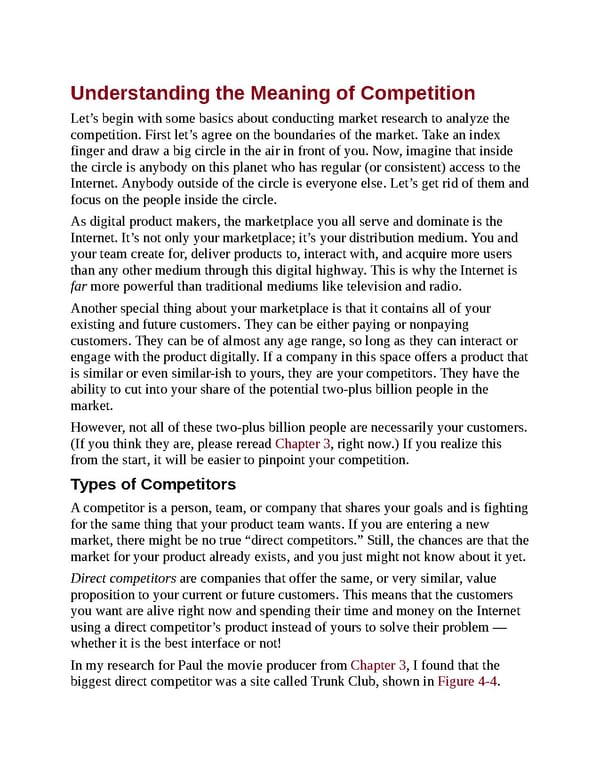Understanding the Meaning of Competition Let’s begin with some basics about conducting market research to analyze the competition. First let’s agree on the boundaries of the market. Take an index finger and draw a big circle in the air in front of you. Now, imagine that inside the circle is anybody on this planet who has regular (or consistent) access to the Internet. Anybody outside of the circle is everyone else. Let’s get rid of them and focus on the people inside the circle. As digital product makers, the marketplace you all serve and dominate is the Internet. It’s not only your marketplace; it’s your distribution medium. You and your team create for, deliver products to, interact with, and acquire more users than any other medium through this digital highway. This is why the Internet is far more powerful than traditional mediums like television and radio. Another special thing about your marketplace is that it contains all of your existing and future customers. They can be either paying or nonpaying customers. They can be of almost any age range, so long as they can interact or engage with the product digitally. If a company in this space offers a product that is similar or even similar-ish to yours, they are your competitors. They have the ability to cut into your share of the potential two-plus billion people in the market. However, not all of these two-plus billion people are necessarily your customers. (If you think they are, please reread Chapter 3, right now.) If you realize this from the start, it will be easier to pinpoint your competition. Types of Competitors A competitor is a person, team, or company that shares your goals and is fighting for the same thing that your product team wants. If you are entering a new market, there might be no true “direct competitors.” Still, the chances are that the market for your product already exists, and you just might not know about it yet. Direct competitors are companies that offer the same, or very similar, value proposition to your current or future customers. This means that the customers you want are alive right now and spending their time and money on the Internet using a direct competitor’s product instead of yours to solve their problem — whether it is the best interface or not! In my research for Paul the movie producer from Chapter 3, I found that the biggest direct competitor was a site called Trunk Club, shown in Figure 4-4.
 UX Strategy: How to Devise Innovative Digital Products that People Want Page 83 Page 85
UX Strategy: How to Devise Innovative Digital Products that People Want Page 83 Page 85